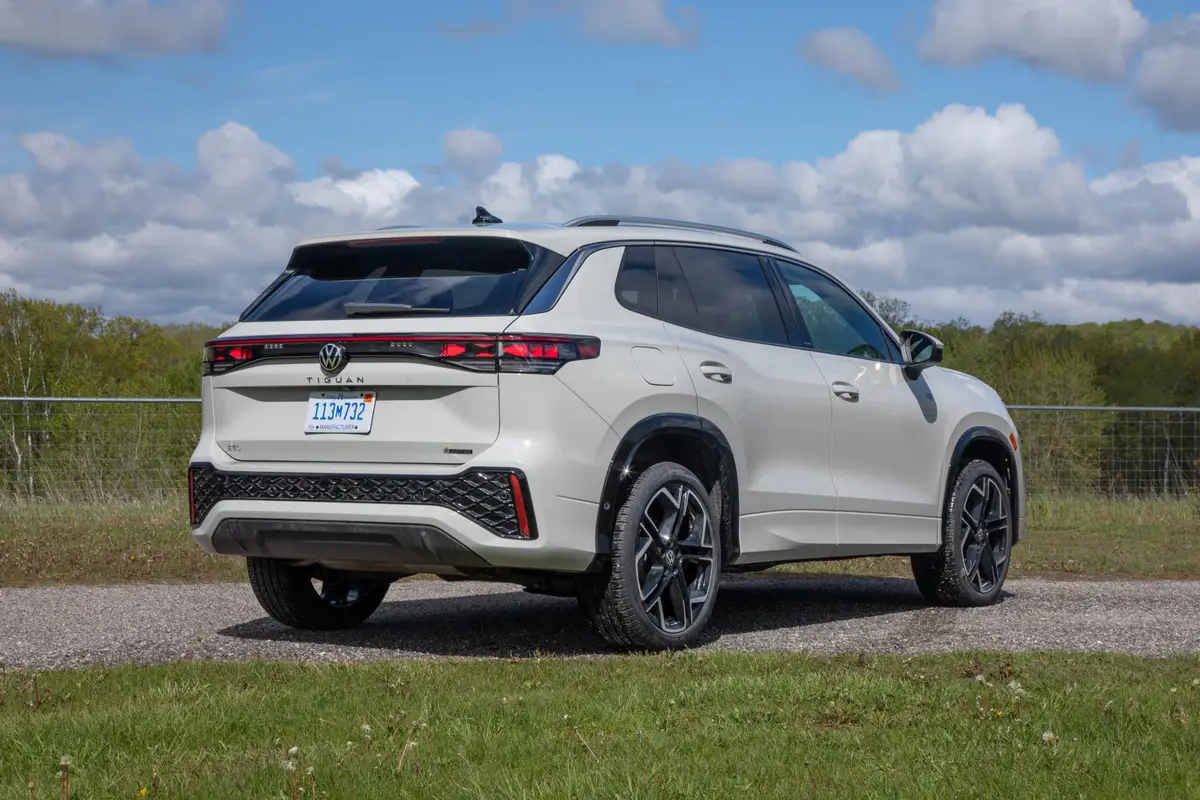AZCentral.com's view
Compact SUV saves gas
The big change is under the hood, but Ford slightly restyled the exterior of the Escape Hybrid, as well. The dashboard includes a special gauge for measuring battery charging.
The Ford Escape Hybrid coasted silently away from the traffic light, only its electric motor providing the pull.
Traffic was dense in Los Angeles, as usual, the perfect environment for testing Ford’s claim that its compact sport utility vehicle would score remarkable miles per gallon under urban driving conditions.
Sure enough, the combination electric motor and gasoline engine beat the 35 miles per gallon mark consistently, even though we spent so much time idling in traffic. Actually, idling is a misnomer, since the gasoline engine turns itself off when it’s not needed. It doesn’t come on again until the Escape is traveling 20 or 25 miles per hour under electric power.
Which means that under slow traffic conditions, the gas engine only starts occasionally, and only teaspoons of gas are consumed.
Hybrid power, which has served a tiny niche of frugal motorists and committed environmentalists, hits the mainstream next month with the first sport utility vehicle to offer the clean-running, gas-sipping technology. Escape joins the Toyota Prius, which has a similar drive system; Honda Civic, which uses slightly different hybrid technology, and the tiny Honda Insight, a gas mileage champ.
But Escape still represents a breakthrough for hybrid vehicles, an SUV with broad family appeal and essentially no compromises in style, space or performance.
Ford’s timing couldn’t be better; Escape Hybrid arrives just as gas prices head for the stratosphere.
What it is
The first family-oriented vehicle with hybrid power, and the first American-made full hybrid, Escape represents a new choice.
Performance
The complex interchange of gasoline engine and electric motor is nearly transparent to the driver.
The overall sensation: lots of torque for smooth acceleration, hill climbing. The power is comparable to the Escape V-6, with better fuel mileage than the four-cylinder. Ford demonstrated the Escape Hybrid in Manhattan, driving non-stop for 37 hours, averaging more than 38 miles per gallon and totaling 576 miles on a tank of gas.
On the open road, climbing steep grades and running at 75 mph, the front-wheel-drive SUV averaged around 28 miles per gallon. And that was with plenty of muscle for acceleration and passing.
The 2.3-liter four-cylinder gasoline engine adds its power to a 400-volt electric motor, resulting in 155 net horsepower, according to Ford’s calculations. In city driving, the Escape Hybrid is an electric vehicle with a supplemental gas engine that provides additional power and battery recharging.
Tailpipe emissions are low enough to qualify Escape Hybrid for the stringent U.S. standard of Advanc ed Technology Partial Zero Emissions Vehicle.
The Escape never gets plugged in, its recharging needs performed by the electronic give and take of the gas/electric propulsion system, which the driver can monitor on a video screen.
The powerplant is similar in design to Toyota’s Prius, and Ford licensed some of the concepts from the Japanese company. But the system is unique to Ford, created by its own engineers.
Power goes through an electronic continuously variable transaxle, also part of the fuel-economy equation. The engine, motor, transaxle and electronic control system are all contained in a compact unit.
The view under the hood is surprisingly normal. The battery pack consists of 250 D-size nickel-metal hydride cells housed in a sealed enclosure hidden under the rear cargo floor. The batteries and other parts of the hybrid-specific components are covered by an eight-year, 100,000-mile warranty.
The extreme complexity of the hy rid system, reliant on advanced technology and unique mechanical features, makes me a little queasy. Reliability, of course, remains to be seen.
Drivability
Like the conventional Escape, the hybrid is available either as front- or all-wheel drive, providing the same rough-terrain capabilities. I drove a front-drive version.
On the highway, the hybrid Escape feels pretty much like a normal Escape. The electronic power steering has good response but a somewhat disconnected feel.
Regenerative braking, which also helps recharge the batteries, are four-wheel discs and work well. Don’t worry about riding the brakes – you’re saving fuel.
Styling
The 2005 Escape gets a mild facelift for a more integrated look.
Interior
The hybrid system takes nothing away from interior space.
Pricing
Although Ford has not announced pricing, add about $3,500 to the base price of an Escape, which is $19,00 for front-wheel drive, $21,000 for all-wheel drive.
At that, it would take years of driving to recoup the cost of the Escape Hybrid. But for many drivers, the satisfaction of driving an ultra-clean emissions vehicle outweighs the initial cost.
Bottom line
Ford says it will produce 20,000 Escape Hybrids for 2005, and 30,000 people have expressed interest in buying one. Toyota has a long waiting list for its Prius.
Watch for many more hybrid vehicles to appear on the scene, including a 2005 Honda Accord and Lexus RX 00h, in what could be an important trend in automotive history.
Ford Escape Hybrid
Vehicle type: Five-passenger, four-door sport utility, front-wheel drive.
Base price: $22,900 (estimated).
Engine: Gasoline/electric hybrid system: 2.3-liter inline four, 133 horsepower at 6,000 rpm, 129 pound-feet of torque at 4,500 rpm; 400-volt electric traction motor, 94 horsepower. Net horsepower: 155.
Transmission: Electronic continuously variable.
Curb weight: 3,627 pounds.
Gas mileage: 35-40 city, 29-31 highway (Ford figures. Not yet EPA certified).
Highs: High mileage, low emissions. Strong power. Family-size hybrid.
Lows: Price premium. Numb steering. Scary complexity.
Latest news



